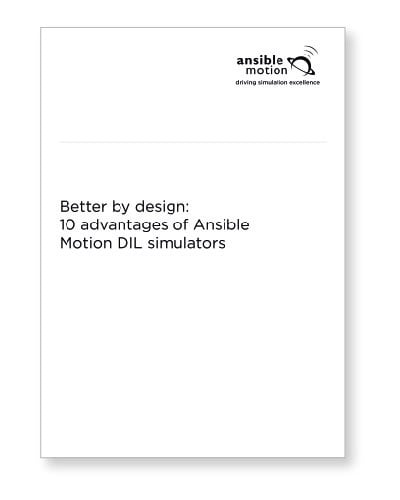 ATTi talks to Kia Cammaerts of Ansible Motion to find out how state-of-the-art simulators are being used to advance vehicle, tire and powertrain testing programs.
ATTi talks to Kia Cammaerts of Ansible Motion to find out how state-of-the-art simulators are being used to advance vehicle, tire and powertrain testing programs.
How are simulators useful for powertrain calibration?
You could run offline simulations with software models of EV powertrains or ICE powertrains, you can run them faster than real time and run hundreds of thousands or millions of them and derive significant information about the whole gamut of behaviour. Then you might add more detailed models, and at some point, you’d want to add hardware-in-the-loop, running real ECUs and real code, but [the disadvantage is] you can’t speed them up, or slow them down. To get exactly the same responses [as they would in reality]they have to run in real time.
Equally you might want to put a driver-in-the-loop, there is no limit. You can also build on this and add mechanical hardware-in-the-loop, like significant parts of the physical vehicle. At the extreme end, [you can use]a real human, real engine, real gearbox, real braking system, real cooling system, and a virtual vehicle. At the offline end, everything is virtual and can be run faster than real time.
You can certainly do the majority of [powertrain]simulation without mechanical hardware, electronic hardware, or human wetware-in-the-loop, because you can explore very detailed mathematical models of the behavior of your system in a great degree of complexity. But at some point, you do need to focus on in-the-loop experiments.
Mechanical hardware-in-the-loop is rare, because of the complexity and the expense, but it is the gold standard for simulation. The big disadvantage is that you actually have to have the hardware there. If you have a good software model of the hardware you are proposing, you can put a human in at any stage, and you can actually put them in at a much earlier stage than you can with HiL or MHIL applications.
Read the full article for answers to the questions:
- In what ways are simulators or DiL being used for ADAS or AV testing?
- How are simulators useful for developing and testing tires, and have you seen a growing interest from tire manufacturers?
- Can you use simulation for crash testing?
Read the full article on the Automotive Testing Technology International website.



